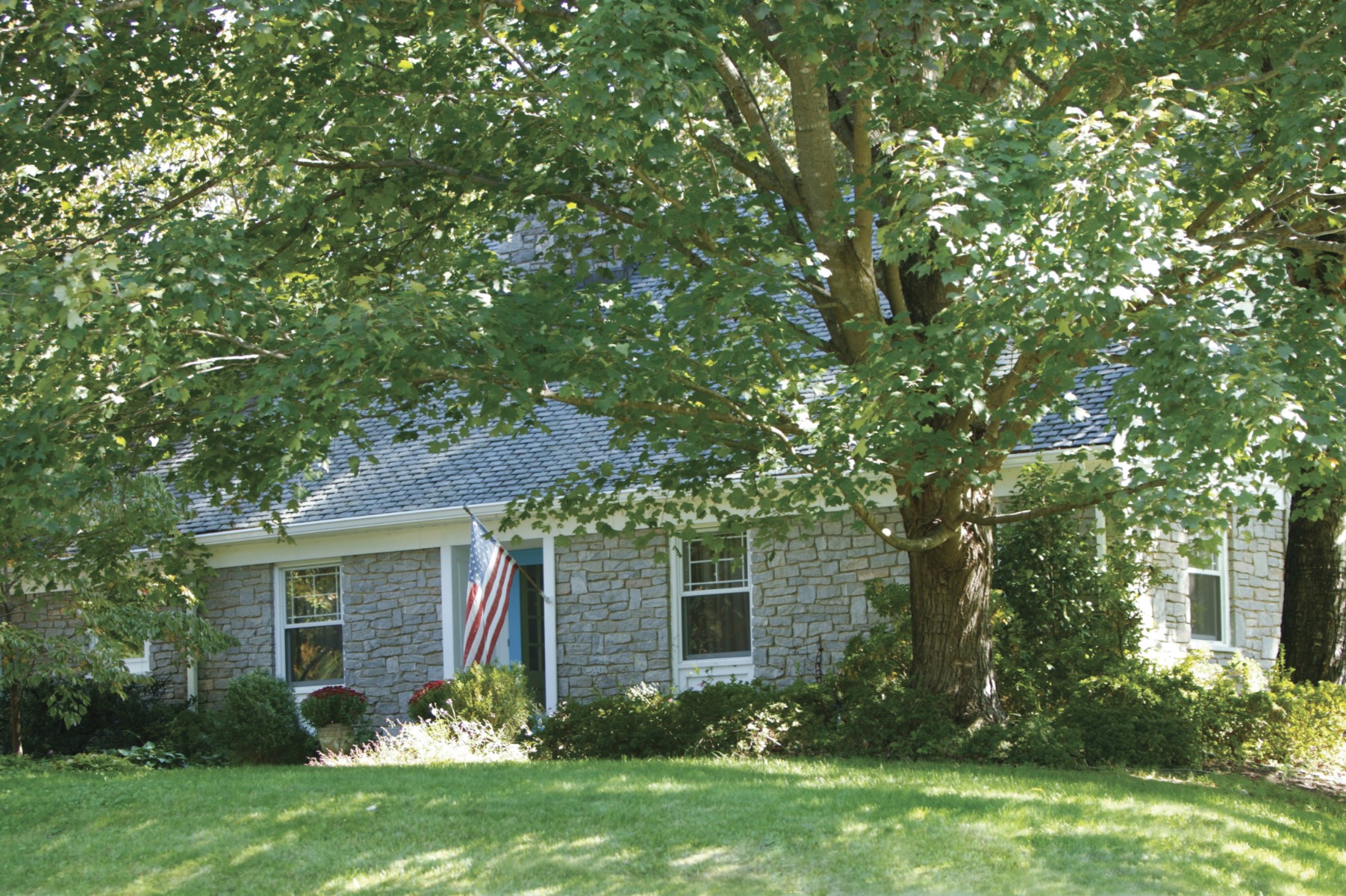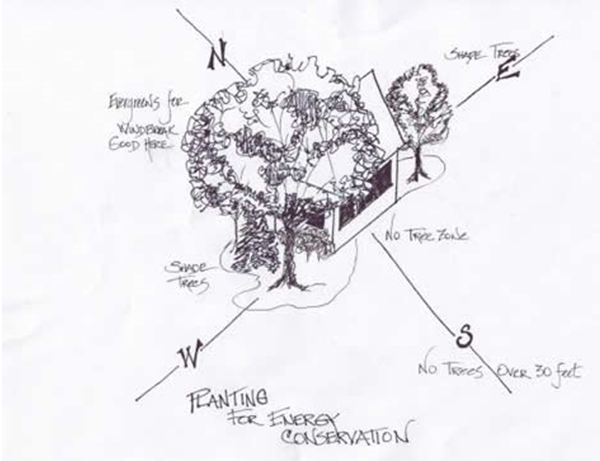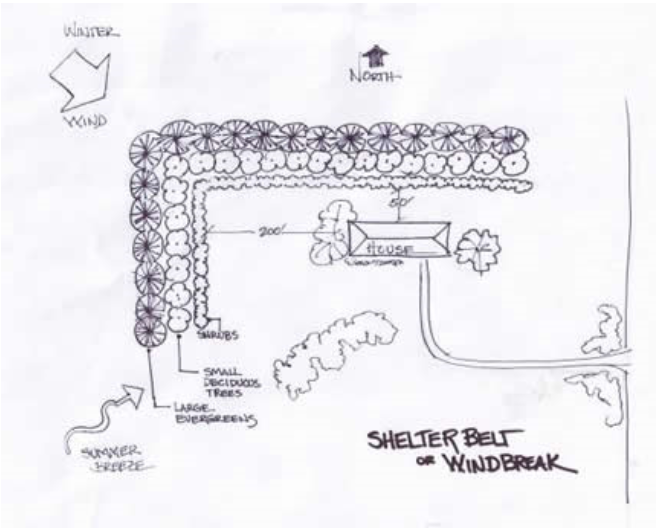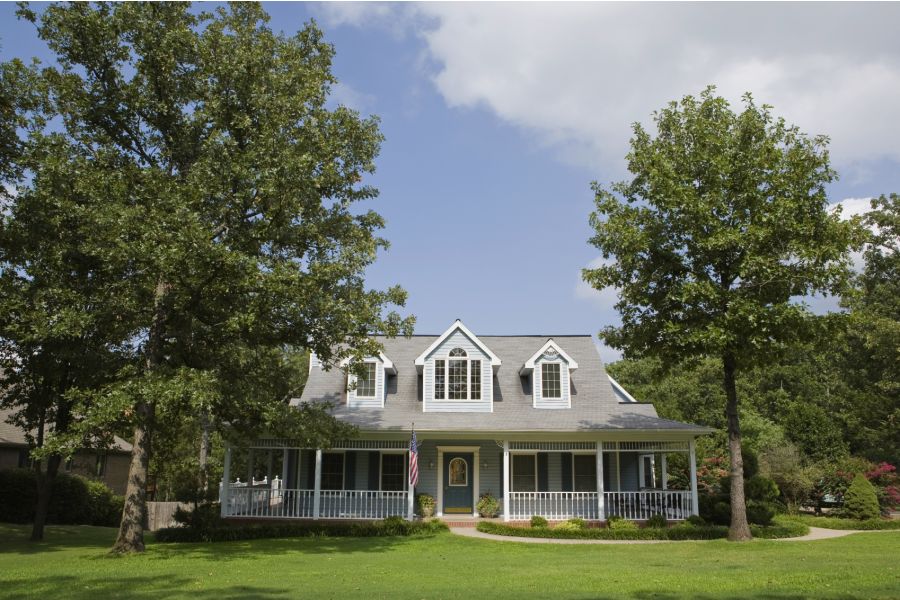Trees and shrubs can reduce fuel consumption for heating and cooling your home. Our Gerten Experts share ways to modify your local climate.

Trees and other vegetation impact energy use and conservation in several important ways:
- The net cooling effect of one tree is equivalent to 10 room-sized air conditioners running for 20 hours a day.
- Trees block solar radiation and reduce solar gain by shading building windows and air conditioning units.
- Mature deciduous trees can block 70% to 90% of the solar radiation on clear days in the summer.
- Deciduous trees also have a significant shading impact in winter, blocking up to 30% to 50% of the solar radiation passing through the bare branches and twigs.
Plant characteristics that impact energy conservation include:
- Height
- Form
- Crown density
- The length of time the plant holds its foliage.
Trees become denser as they grow older and different species have varying crown densities. A primary goal in using trees for energy conservation is to maximize shade during the summer and minimize it during the winter. Trees also impact energy use and conservation by reducing wind speed.

Planting shade trees in correct areas can decrease cooling costs
Winter:
Winter can be brutal on our bank account. With few hours of daylight, more time spent indoors and cold temperatures, consider these landscaping options:
- Because of the low sun angles in winter months, south facing windows should remain unobstructed by vegetation to maximize passive solar warming, which can provide 5-20% of the energy needed to heat a home.
- Avoid placing shade producing trees on the south side, unless they are at least twice their mature height away from the house.
- Planting a windbreak on the northwest side of your property, or shelterbelt, can help deflect the prevailing winds and provide additional savings.
Shelterbelts are typically placed 50-200 feet away from the house on the north and west sides of the property running perpendicular to the prevailing winter winds and extending well beyond the structure.
Planting a shelterbelt:
- Larger suburban or rural properties are usually where shelterbelts are used.
- Begin with 1-2 rows of shrubs
- 1-3 rows of small to mid-size deciduous trees
- 1-2 rows of evergreen trees, usually spruce which are dense and start branching low to the ground.
- Smaller urban lots can still benefit from the use of wind deflection. Structures placed on the northwest side of your property can help as can a grouping of large evergreens or deciduous trees with dense canopies.
Summer:
- Place trees to the west and east of the house in order to create shade in the late morning and hot afternoon.
- Avoid placing trees on the south side to reduce winter shading and subsequent reduction in solar radiation.
- Locate the air conditioner either on the north side or within the shade of a tree to allow the air conditioner to run more efficiently.
- Plant trees which grow as large as the space will allow.
- Choose trees that are best suited to the particular conditions of the site, such as soil, light, moisture.
- If you already have large trees to the south, prune up the lower branches to allow in more winter sun.
- If you must plant large trees on the south side, they should be placed at least as far away as the tree is tall at maturity.
- The best deciduous trees for both shade in the summer and maximum solar radiation in the winter have broad, dense canopies, leaf out late in the spring and lose their leaves early in the fall. They include such species as Kentucky Coffee trees and Walnuts.
- Try to avoid using trees that hold onto their leaves late into the fall or through the winter.

A properly planted windbreak can significantly decrease the amount of wind and sun that hit the house.
Foundation Plants:
Foundation plants consisting of shrubs and small trees can also have a significant impact on energy reduction by restricting the amount of wind and sun that hits the house. P
- Plant so there is at least a 12-inch space between the plants and your foundation at their mature size. This acts much like the air space in double paned windows to enhance insulation.
- Vines grown on a trellis or directly on the building also create shade and provide insulation.
Some Plant Options: (Mature Height/Minimum Planting Distance Out from Structure)
Shade Trees
- Acer – Maple - Red and Sugar varieties (40 ft./15-30 ft.)
- Betula – River Birch (40 ft./15-30 ft.)
- Catalpa(30 ft./10-20 ft.)
- Celtis – Hackberry(40 ft./15-25 ft.)
- Gymnocladus – Kentucky Coffee (40 ft./15-25 ft.)
- Juglans – Black Walnut (40 ft./15-30 ft.)
- Tilia – Little Leaf or American Linden (40 ft./15-30 ft.)
Shorter deciduous trees
- Amelanchier – Serviceberry (15-25 ft.t/8-10 ft.)
- Malus – Crabapple (8-25 ft. depending on species/10-15 ft.)
- Syringa – Tree Lilac (25 ft./10-15 ft.)
- Sorbus – Showy Mountain Ash (20-25 ft./15-20 ft.)
Evergreen
- Abies – Fir (40-50 ft./25-35 ft.)
- Picea – Spruce (35-45 ft./25-35 ft.)
The Gerten Experts are always available to answer your questions!

